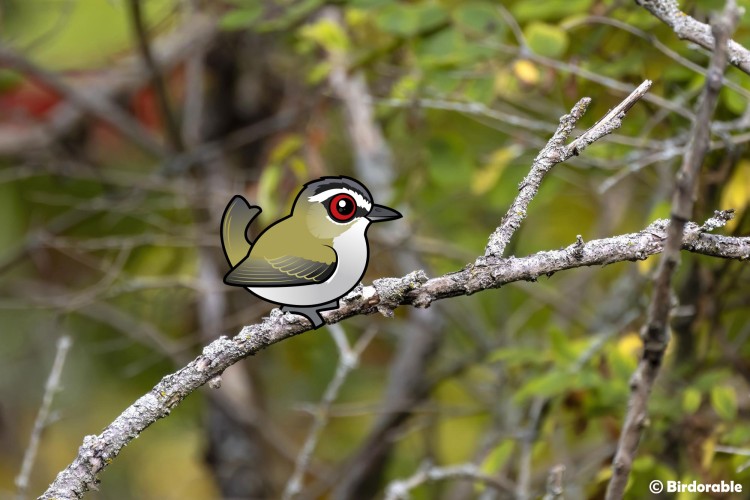Eye Color in Birds: The Mystery of Red Eyes
When you spot a bird with red eyes, it’s hard not to do a double take. While it might seem spooky or unusual, red eyes are perfectly normal for many bird species. From songbirds to waterbirds, eye color can vary a lot in the avian world. But why do some birds have red eyes? Let’s explore the reasons and highlight a few red-eyed species.
How do some birds have red eyes?
Eye color in birds is influenced by several different factors. Different pigment types, structural factors in the iris, and other criteria may contribute to eye color. In red-eyed birds, the red color often comes from blood vessels showing through a relatively unpigmented iris, or from pigments like carotenoids. These pigments can create various hues, including red, orange, or yellow, depending on their concentration and how light hits the eye. Differences in diet can also influence the pigments that determine eye color.
Why do some birds have red eyes?
Red eyes can serve different purposes depending on the species. For some birds, red eyes are a signal used in social interactions or mating displays. In others, it might help identify individual birds, or aid in camouflage. It might simply be a side effect of genetics with no major evolutionary function.
What are some birds with red eyes?
One of the most well-known red-eyed birds is the Red-eyed Vireo. This small songbird is found across much of North America during the breeding season. Its distinctive red eyes are set against a gray head and white underparts, making them stand out. Red-eyed Vireos are known for their persistent singing during the summer, often heard before they're seen.

Another common red-eyed species is the American Coot. These waterbirds have dark bodies, white bills, and bright red eyes that contrast sharply with their plumage. Unlike ducks, American Coots have lobed toes instead of webbed feet, which help them swim. The red eyes of coots may play a role in signaling during territorial or mating behavior.
The Wood Duck is another example, with males showing off striking red eyes that add to their already colorful appearance. In their case, red eyes might serve to attract mates by emphasizing their bold and flashy plumage.
Some grebes, like the Eared Grebe and Western Grebe, also sport red eyes. These aquatic birds are excellent divers, and their eye color may help enhance vision in darker conditions, such as underwater.
Interestingly, red eyes aren’t always present throughout a bird’s life. Some birds develop red eyes only as adults, and juveniles may have dark or brown eyes that change as they mature. This age-related color change might help birds recognize individuals of breeding age. For example, adult Black-crowned Night-Herons have red eyes; young birds have yellowish eyes.
There’s also variation even within a species. Not all individuals of a red-eyed species will have equally vivid red eyes. Light, diet, age, and even stress can affect how bright their eyes appear. Swallow-tailed Kites have varied eye colors between individuals. Some kites have red eyes, while others have dark brown eyes.
Though red eyes are striking, they’re just one example of the fascinating diversity of bird eye color. Birds can have yellow, orange, blue, white, or dark eyes, and each color might play a role in their behavior, ecology, or communication.
Next time you see a bird with red eyes, remember—it’s not scary. It’s just one of the many cool adaptations birds have evolved. If you'd like to learn more about eye color in birds, check out this article about eye color from the British Ornithologists' Union and this Audubon article: Bird Eyes Come In an Amazing Array of Colors.




Comments
Be the first to comment
Thank you!